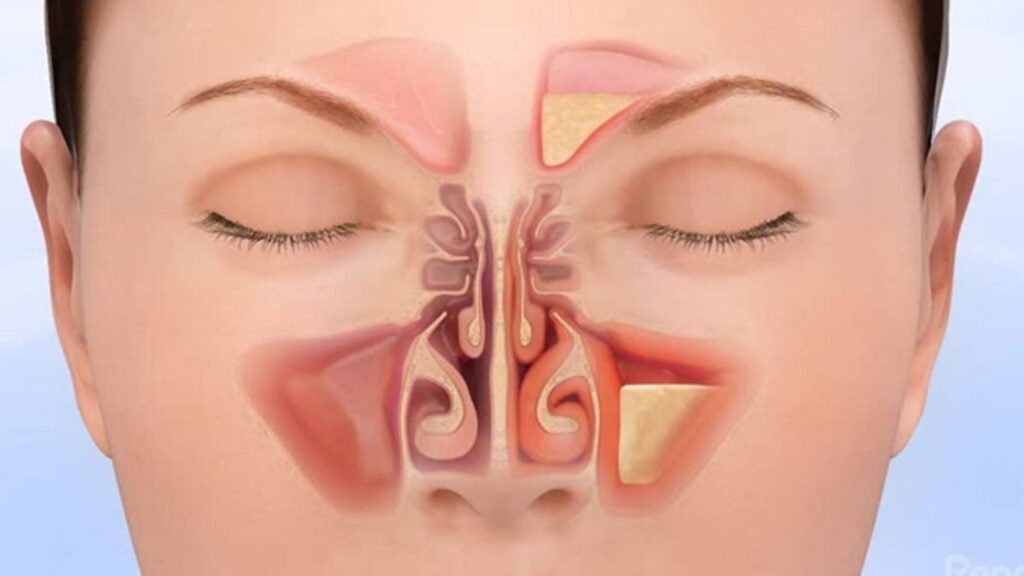Sinusitis, a common condition affecting millions globally, is more than just a temporary inconvenience; it’s an ailment that can significantly impact one’s quality of life. Characterized by the inflammation of the sinuses, this condition can lead to persistent headaches, facial pain, and a plethora of other discomforts that disrupt daily activities. Whether acute or chronic, sinusitis presents a challenge to those who experience its symptoms, affecting their work, sleep, and overall wellbeing. The intention of our exploration is to delve deep into the roots of this condition, identifying its various causes that range from infections to environmental triggers. We aim to outline the hallmark symptoms that can help in early detection and, most importantly, discuss practical and effective strategies for prevention. By arming ourselves with this knowledge, we can take proactive steps towards managing and preventing sinusitis, paving the way for a healthier, more comfortable life.
Sinusitis Unveiled: Causes, Symptoms, and Prevention
Understanding Sinusitis
Sinusitis is an inflammation of the sinuses, air-filled cavities around the nasal passages, playing a critical role in respiratory health by filtering and humidifying the air we breathe. This condition can significantly affect breathing, cause pain, and impact overall quality of life. Sinusitis is categorized into acute and chronic forms, each affecting individuals differently. Acute sinusitis typically follows a cold and lasts for a short period, usually up to four weeks. It’s characterized by sudden onset of symptoms such as facial pain, nasal congestion, and discharge.
Chronic sinusitis, on the other hand, persists for 12 weeks or longer, despite treatment efforts, and can lead to a continuous, dull pressure or discomfort in the face, along with nasal blockage and a reduced sense of smell. Understanding the distinction between acute and chronic sinusitis is crucial for effective treatment and management, ensuring better respiratory health and quality of life.
Anatomy of the Sinuses
Sinuses are air-filled cavities located within the bones around the nose and eyes, playing a vital role in respiratory health. Their primary function includes producing mucus that protects the nasal passages from pollutants, allergens, and pathogens. Healthy sinuses allow air to circulate and mucus to drain, maintaining a balance that is crucial for the respiratory system’s proper functioning.
When sinuses become inflamed, a condition known as sinusitis, this balance is disrupted. Inflammation can block the sinus openings, preventing normal air circulation and mucus drainage. This blockage leads to a build-up of mucus, creating an environment ripe for bacterial, viral, or fungal infections. Healthy sinuses operate seamlessly, contributing to comfortable breathing, enhancing the air’s humidity, and protecting the body against airborne contaminants. In contrast, inflamed sinuses result in symptoms such as congestion, facial pain, reduced sense of smell, and overall discomfort, significantly impacting an individual’s daily life and well-being.

Causes of Sinusitis
- Viral Infections: The most common cause of acute sinusitis, often following the common cold. Viruses can swell and block the sinuses, leading to symptoms of sinusitis.
- Bacterial Infections: When sinuses are blocked, they can become a breeding ground for bacteria, leading to bacterial sinusitis. This type often follows viral sinusitis or can occur on its own.
- Fungal Infections: Less common, especially in individuals with weakened immune systems. Fungi can invade the sinuses, causing inflammation and symptoms of sinusitis.
- Deviated Septum: An anatomical issue where the nasal septum — the bone and cartilage dividing the nasal cavity — is off-center. This can block sinus drainage, leading to chronic sinusitis.
- Nasal Polyps: Small, benign growths in the nasal passages or sinuses that can obstruct mucus flow and air circulation, contributing to sinusitis.
- Allergies: Allergic reactions can lead to sinus swelling and blockage, exacerbating or leading to sinusitis, especially when allergens are persistent.
- Smoking: Tobacco smoke irritates and inflames the nasal passages and sinuses, increasing the risk of sinusitis.
- Air Pollution: Pollutants and irritants in the air can aggravate the sinuses, leading to inflammation and increasing the susceptibility to sinusitis.
Symptoms of Sinusitis
- Common Symptoms of Both Acute and Chronic Sinusitis:
- Nasal Congestion: Leads to difficulty breathing through the nose, affecting sleep and daily activities.
- Facial Pain/Pressure: Often around the forehead, cheeks, and eyes, impacting focus and comfort.
- Postnasal Drip: Causes a persistent cough or throat irritation, affecting speech and sleep.
- Symptoms Unique to Acute Sinusitis:
- Sudden Onset: Rapid development of symptoms following a cold or allergy.
- Fever: Indicates the body’s fight against infection, impacting overall energy levels and daily functioning.
- Green or Yellow Nasal Discharge: Sign of infection, differing from the clearer discharge in chronic cases.
- Symptoms Unique to Chronic Sinusitis:
- Prolonged Symptoms: Lasting 12 weeks or more, affecting long-term quality of life.
- Reduced Sense of Smell and Taste: Can lead to a lack of enjoyment in food and beverages.
- Fatigue: Chronic inflammation can cause persistent tiredness, affecting work and personal life.
These symptoms, particularly when persistent or severe, can significantly impact an individual’s quality of life, affecting their ability to perform daily tasks, enjoy social activities, and maintain productivity.
Complications of Untreated Sinusitis
Potential complications from sinusitis extend beyond immediate symptoms, posing risks that can affect overall health. Sinus infections can spread to surrounding areas, including the eyes or brain, leading to serious conditions like orbital cellulitis or meningitis, which require immediate medical attention. A decreased sense of smell, a complication particularly common in chronic sinusitis, can impact safety and enjoyment of life, affecting the ability to detect dangers like gas leaks and diminishing the pleasure derived from eating. Additionally, sinus cysts, or mucous retention cysts, can form within the sinuses, potentially obstructing drainage and exacerbating symptoms. These complications underscore the importance of addressing sinusitis early and effectively to prevent further health issues.
Diagnosis of Sinusitis

Diagnosing sinusitis typically involves a multi-step approach, starting with a physical examination where a healthcare provider evaluates symptoms and inspects the nasal passages for signs of inflammation. For a more in-depth assessment, imaging tests such as CT scans or MRI scans may be utilized, offering detailed views of the sinus cavities to detect blockages or other issues. Additionally, allergy tests are often conducted, especially if allergic reactions are suspected to be contributing to sinus inflammation. These tests help identify specific allergens causing symptoms. This comprehensive diagnostic process ensures an accurate understanding of the condition, facilitating targeted and effective treatment strategies.
Prevention Strategies
- Maintain Good Hygiene: Regular handwashing to prevent the spread of viruses and bacteria that can lead to sinus infections.
- Stay Hydrated: Drinking plenty of fluids to thin mucus, facilitating better drainage and reducing sinus pressure.
- Use a Humidifier: Keeping indoor air moist to prevent sinus membranes from drying out, especially in dry climates or during winter.
- Avoid Smoke and Pollutants: Steering clear of smoking and avoiding exposure to secondhand smoke and environmental pollutants that can irritate nasal passages.
- Manage Allergies: Staying on top of allergy treatments and avoiding known allergens to reduce the risk of sinusitis flare-ups.
- Practice Nasal Irrigation: Using saline solutions to flush out irritants and mucus from nasal passages, keeping them clear.
- Dietary Adjustments: Incorporating foods rich in antioxidants and omega-3 fatty acids, which can reduce inflammation, and considering the reduction of dairy if mucus production increases.
- Exercise Regularly: Enhancing overall health and immunity, which can decrease the incidence of upper respiratory infections leading to sinusitis.
- Get Adequate Rest: Ensuring sufficient sleep to support immune function and resist infections more effectively.
- Vaccinations: Keeping up with flu and pneumonia vaccinations to help avoid upper respiratory infections that can exacerbate sinus issues.
Implementing these preventive measures can significantly reduce the risk of developing sinusitis, highlighting the importance of environmental controls, lifestyle adjustments, and effective management of allergies in maintaining sinus health.
Treatment Options
Treatment options for sinusitis vary based on severity and whether the case is acute or chronic. Medications often include nasal decongestants, antihistamines for allergy-related sinusitis, and antibiotics for bacterial infections. Home remedies, such as steam inhalation, warm compresses, and saline nasal sprays, can alleviate symptoms by reducing congestion and inflammation. For chronic sinusitis not responsive to conservative treatments, surgical interventions may be considered. Procedures like endoscopic sinus surgery or balloon sinuplasty aim to clear blocked sinuses, restoring normal drainage. These treatment strategies, from medications and home remedies to surgery, offer a comprehensive approach to managing sinusitis and improving quality of life.

Conclusion
Sinusitis, with its myriad of causes, symptoms, and potential for significantly impacting daily life, demands attention and understanding. From environmental triggers and anatomical factors to viral, bacterial, or fungal infections, the origins of sinusitis are as diverse as the strategies for its prevention and treatment. Armed with knowledge on maintaining optimal sinus health through lifestyle changes, environmental controls, and dietary considerations, individuals can effectively minimize their risk. For those already navigating the challenges of sinusitis, a combination of medical interventions and home remedies offers a path to relief. Ultimately, understanding and proactive management are key to mitigating the effects of this common yet manageable condition.
Also read: How to Take Care of Your Health in Changing Weather
